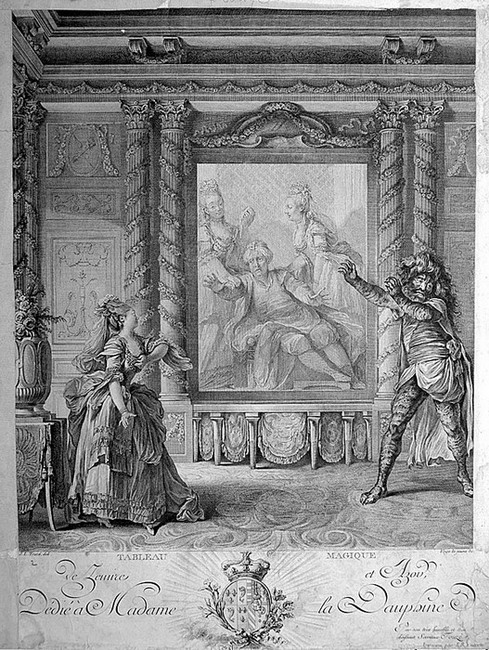Zémire and Azor: André Grétry’s Opéra Comique by François Filiatrault
/ April 1, 2015
Version française...
 Zémire and Azor is among the very first and the best of some twenty-five opéras comiques that earned fame for André Ernest Modeste Grétry. First presented at Fontainebleau on November 9, 1771 and dedicated to Madame du Barry, the work became immensely popular and would be performed throughout Europe over the next two decades. Zémire and Azor is among the very first and the best of some twenty-five opéras comiques that earned fame for André Ernest Modeste Grétry. First presented at Fontainebleau on November 9, 1771 and dedicated to Madame du Barry, the work became immensely popular and would be performed throughout Europe over the next two decades.
Grétry was born in Liege in February 1741, and moved to Paris in 1767 after studying five years in Italy, where he became familiar with the sparkling style of opera buffa. His first operatic work was unsuccessful, but his collaboration with Jean-François Marmontel, which lasted until 1777, established his reputation: their first work, Le Huron, performed in 1768, won over audiences. Although he devoted himself almost entirely to the stage, Grétry soon became the music director to the new queen, Marie-Antoinette, who furthered his career. The queen loved opéras comiques, which consisted of alternating bits of spoken dialogue – replacing recitatives – and musical pieces, tunes, arias, and vocal ensembles. After the French Revolution, despite numerous honours conferred upon him, Grétry gave up composition and wrote his memoires. He passed away in December 1813 in Montmorency, in Jean-Jacques Rousseau’s hermitage, which he had purchased.
For the libretto of Zémire and Azor, classified as a “comédie-ballet mixing song and dance” (doubtlessly in homage to Moličre), Marmontel took the tale of Beauty and the Beast from Madame Leprince de Beaumont and situated it in the exotic orient, a crowd-pleaser at the time. The plot flirts with a variety of genres: heroism, playfulness and amorous languor are combined with the comedic, personified in the character of Ali, the servant. The synopsis: to thank the monstrous-looking Azor for having saved his life, Sander must send him one of his daughters. Zémire accepts the sacrifice and joins Azor. Despite his appearance, Azor’s goodness succeeds in winning the heart of the beautiful Zémire. When Zémire misses her family, Azor reveals them to her in a magic mirror and allows her to visit her loved ones on the condition of her return. Against the advice of her father, Zémire returns to Azor and the young woman’s faithfulness breaks the spell: Azor is transformed back into a handsome young prince.
Vocally, the drama injects the emotions with much truth, and the work is bursting with beautiful and charming melodies. The Italian form is especially deployed in the ariettas, which are no “little arias” as the term might suggest, but great airs, often in da capo and with vocalises, trills, and triplets, “La Fauvette” being a prime example. They accompany rustic or romantic scenes, a bit as a subplot. After a beautiful Overture, in which the third movement foreshadows the drama, the instruments establish the various atmospheres, participate in the emotions of the characters, and contribute to several dances – originally choreographed by Gaëtan Vestris. Even without the more familiar symphonic textures of Haydn or Mozart, the orchestration is transparent and meticulous, lacking neither colour nor poetry.
Nicolas Méhul, Grétry’s greatest devotee, said of Grétry, “He was more wit than composer!”
Translation: Rebecca Anne Clark
Zémire et Azor will be performed by Les Violons du Roy, May 23 (Montreal), May 27 (Quebec City). Mathieu Lussier, conductor, Denys Arcand, staging. www.violonsduroy.com. Denys Arcand will give discuss this opera at a conference to benefit La Scena Musicale, May 3. www.lascena.ca.
Version française... | |

